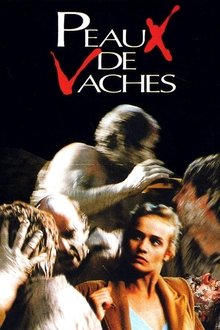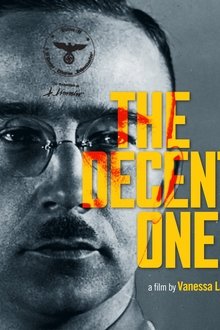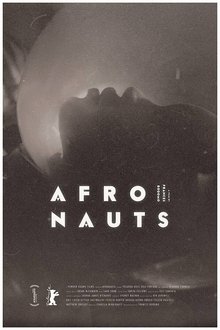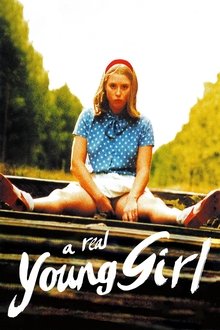The Cambridge Squatter tells the story of refugees, recently arrived in Brazil who, together with a group of low-income workers, occupy an old abandoned building in downtown São Paulo. Daily dramas, comical situations and different views on the world commingle with the threat of impending eviction.
Related Movies

9-Man (2014)
'9-Man' is an independent feature documentary about an isolated and exceptionally athletic Chinese-American sport that's much more than a pastime. Since the 1930s, young men have played this gritty streetball game competitively in the alleys and parking lots of Chinatown. At a time when anti-Chinese sentiment and laws like the Chinese Exclusion Act forced Chinese restaurant workers and laundrymen to socialize exclusively amongst themselves, nine-man offered both escape and fraternity for men who were separated from their families in China and facing extreme discrimination and distrust. Pivoting between oil-spotted Chinatown parking lots and jellyfish-filled banquet scenes, the film captures the spirit of nine-man as players not only battle for a championship but fight to preserve a sport that holds so much history.

Thick Skinned (1989)
Two brothers set fire to a barn while drunk, inadvertently causing the death of a sleeping wanderer. One of them takes all the blame for the incident and spends ten years in prison.

On Sugar Workers' Quarters (1971)
Documentary about the history of the bateyes, informal settlements surrounding the mills to house workers. Throughout the film, Sara Gómez recovers the political and cultural relevance of black migrants.

Journeys from Berlin/1971 (1980)
An epic meditation on psychoanalysis, the Baader-Meinhof, feminism, and pre-revolutionary Russia.

Love Is the Beginning of All Terror (1984)
Story concerns two friends, Freya and Irmtraut and their relationships with the same man, Traugott, who finds it impossible to choose between the two women.

Change of Fate (1987)
A lawyer defends a wealthy woman accused of murder. She claims it was self-defense. The lawyer is not sure.

Santa Santita (2004)
After taking up with a charming cab driver, a wild and hedonistic teenage girl returns home to succeed her mother as a prayer woman.

The Decent One (2014)
Through previously undiscovered private letters, photos and diaries that were found in the Himmler family house in 1945, the "The Decent One" exposes a unique and at times uncomfortable access to the life and mind of the merciless "Architect of the Final Solution" Heinrich Himmler.

Afronauts (2014)
16th July 1969: America prepares to launch Apollo 11. Thousands of kilometers away, a ragtag group of Zambian exiles is trying to beat America to the Moon.

Monday Morning (1988)
Frivolous girl falls in love with a young construction worker. He trusts her and decides to include her in his team of workers. In the beginning, she is happy, but soon starts to feel the tensions between the people in the team. Hypocrisy and demagogy fill her with indignation and she does not keep silent about the shortcomings and mistakes of her colleagues. Gradually, her superiors become uneasy about her and the girl has to go. Her boyfriend offers her marriage, but she decides to take her own path and lead a worthy life. The movie was shot in 1966 but was censored by the communist government and released in theatres on 31st October 1988.

Amanda F***ing Palmer on the Rocks (2014)
Follow punk-cabaret icon Amanda Palmer as she hits the stage at Red Rocks Amphitheater. Since her record-breaking $1.2 million crowd-funded Kickstarter campaign, Palmer (formerly of the Dresden Dolls) has carved out a path of fearlessness and independence outside the norms of the music industry.

Erica (2016)
Erica has a secret relationship to the married Sebastian. When his wife Liv finds out, she decides to confront Erica over an evening of gin and tonics. Erica is soon being pushed to question what things in life are worth fighting for.

Continuous Torture and Tape Leaked! (1991)
In Tokyo, a man targets an idol singer and couple... Distributed by Xces / Nikkatsu.

Copying Beethoven (2006)
A fictionalised exploration of Beethoven's life in his final days working on his Ninth Symphony. It is 1824. Beethoven is racing to finish his new symphony. However, it has been years since his last success and he is plagued by deafness, loneliness and personal trauma. A copyist is urgently needed to help the composer. A fictional character is introduced in the form of a young conservatory student and aspiring composer named Anna Holtz. The mercurial Beethoven is skeptical that a woman might become involved in his masterpiece but slowly comes to trust in Anna's assistance and in the end becomes quite fond of her. By the time the piece is performed, her presence in his life is an absolute necessity. Her deep understanding of his work is such that she even corrects mistakes he has made, while her passionate personality opens a door into his private world.

Nowhere in Africa (2001)
A Jewish woman named Jettel Redlich flees Nazi Germany with her daughter Regina, to join her husband, Walter, on a farm in Kenya. At first, Jettel refuses to adjust to her new circumstances, bringing with her a set of china dishes and an evening gown. While Regina adapts readily to this new world, forming a strong bond with her father's cook, an African named Owuor.

When Saturday Comes (1996)
Jimmy Muir comes from a typical gritty, northern town where there are only two options: working down the pit or in a factory. But Jimmy has other ideas — he dreams of becoming a professional footballer. Confronted by a bitter and unsupportive father, hard-drinking friends and a lifetime of bad habits...has Jimmy the will to achieve his ultimate goal?

A Real Young Girl (1976)
Reluctantly, a sulky adolescent returns to her parents' house for yet another boring summer vacation, dabbling in desire and the art of desirability, eventually mixing reality with vision, caged fantasies with the fierce female sexuality.

Face of Evil (1996)
Using her girl-next-door looks to her advantage, Darcy Palmer is a calculating thief and murderer. After killing a young college student and taking her identity, Darcy enrolls in the victim's New England school in her place. At the university, Darcy gets to know her new roommate, Jeanelle, and her handsome father, Russell Polk, who soon play into her next scheme. When Darcy has to alter her plans, both Russell and Jeanelle become quite expendable.

Der Zauber des Regenbogens (2007)
A very skilful young architect from Berlin, Lea Winter, who has a promising career, is pregnant with Klaus Arnheim, her head of department, a long-time lover but married and father of a family. At the announcement of this unexpected pregnancy, of course, he only envisages abortion for Lea. However, the young woman hesitates. On the advice of her gynecologist, she decides to leave Ireland for a few days to think and make a decision without any pressure. She finds there a simple, authentic life and is confronted with another rhythm of life, with other values and with herself.

Dig! (2004)
A documentary on the once promising American rock bands The Brian Jonestown Massacre and The Dandy Warhols. The friendship between respective founders, Anton Newcombe and Courtney Taylor, escalated into bitter rivalry as the Dandy Warhols garnered major international success while the Brian Jonestown Massacre imploded in a haze of drugs.